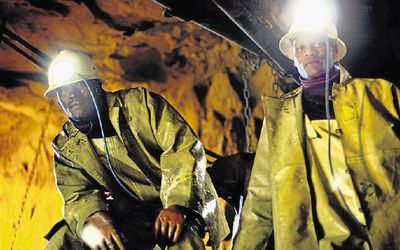PBS: Escaping Eritrea … [Read More...] about ካብ ውሽጢ ቤት ማእሰርታት ኤርትራ
Africa stranded as high tide turns
SINCE the turn of the century, Africa’s growth has averaged about 5%. Now, as commodity prices are cratering, projections for growth are ratcheting down. There is real concern that some African countries have borrowed too much and that many did not do enough during the “fat” years to reduce their dependence on volatile commodity prices.
Even the International Monetary Fund’s revised 2016 forecast of African growth at 4.25% seems optimistic given the extent of the commodity plunge.

These leaner economic times will shed some light on the progress African countries have made in reforming their economies. Or, as Warren Buffett famously said: “Only when the tide goes out, do you discover who’s been swimming naked.”
During the commodity boom, there was considerable optimism that African economies were no longer dependent on raw material exports. McKinsey Global Institute claimed: “(The) commodity boom explains only part of Africa’s growth story. Natural resources directly accounted for just 24% of Africa’s gross domestic product growth from 2000 to 2008.” Rather, McKinsey argued, “the key reasons behind Africa’s surge were improved political and macroeconomic stability and microeconomic reforms”.
It believed Africa would continue to benefit from “rising global demand for oil, natural gas, minerals, food, arable land, and other natural resources”.
As China slows, it is clear the prediction about rising demand was wrong. That makes the observation that African countries have improved their governance critical because economic reform would buffer countries from the shock of declining commodities and help with diversification.
Unfortunately, looking at evaluations of governance, it does not appear that many African countries have fundamentally changed. The Heritage Foundation’s Index of Economic Freedom evaluates countries based on rule of law, fiscal performance, regulation and market openness. It is not perfect, but does allow for consistent comparisons across nations and eras.
The index shows that sub-Saharan Africa has not made much progress between 2010 and 2015. The average ranking of countries in the region increased from 54.07 to 54.95 (the highest, Hong Kong, is 89.6). Sub-Saharan Africa moved from tied with Surinam at number 129 to equal with Egypt at number 124. That is an almost imperceptible change.
Only Mauritius, at number 10 (the US is 12th), can be considered a star and “mostly free”.
The next African country is Botswana at 36th, followed by Cape Verde at 60th. While their performances are impressive, they are home to only 4m people combined. Sub-Saharan Africa has 973m people.
The remaining countries in the top half of the league of 178 are Rwanda at 65, Ghana at 71, SA at 72 and Madagascar at 79. These countries do have some demographic heft, but their overall economic environments are surpassed by dozens of countries.
The other 39 sub-Saharan African countries Heritage has data for are in the bottom half. This will hardly attract investment or suggest that their economies have reformed.
That a failure to take advantage of the good times makes the bad times worse can easily be seen in SA. A 2011 Citibank survey put SA as the world’s richest mining country in terms of its reserves, worth an estimated $2.5-trillion.
However, SA has increased mining regulation and there have been persistent calls for nationalisation of the wealth below the ground. In a 2011 survey by the Fraser Institute, SA’s attractiveness as a mining investment destination slipped as a result of “obscuring government involvement”. The report ranked SA 67th out of 79 for attractiveness to exploration investment.
Not surprisingly, SA’s mining sector declined at an average of 1% per annum during the 2000s, when the global top 20 mining producers grew annually at 5%.
Copper-rich Zambia boomed during the 2000s, benefitting from higher ore prices and liberalisation of foreign investment. But it failed to translate this windfall into a diversification strategy. Now, as copper prices have fallen, the kwacha’s value dropped by more than half between December 2014 and November last year, while the government has increased foreign borrowing.
The greater lesson beyond Africa’s poor performance is in avoiding hubris when evaluating the growth path of countries. Too often, observers use a few years to exclaim that a country or a region is “on the march”.
We should avoid the temptation to draw conclusions at high tide.
• Herbst is president and CEO of the Newseum in Washington DC. Mills is director of the Johannesburg-based Brenthurst Foundation. They are co-authors of How South Africa Works — and Must Do Better
